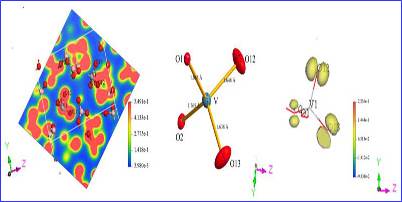Nonlinear optical crystal is the key of frequency conversion in an all-solid-state laser. Inspired by the increasing request on the crystal performance and the difficulty in finding more borate nonlinear optical crystals, it is particularly important to explore new material systems. However, the predominant challenge to design and obtain practically useful materials with specific performance is to clarify the inner mechanisms of nonlinear optical properties.
A research group from Xinjiang Technical Institute of Physics & Chemistry (XTIPC), Chinese Academy of Sciences, employed the first-principles calculations to exploration the mechanism for nonlinear optical (NLO) effect of vanadium borates crystal,Na3VO2B6O11(NVB), with distorted VO4 groups investigated successfully on the basis of the density functional theory (DFT).
This work revealed that the contribution of (VO4)3- anionic group to the second harmonic generation (SHG) response was more pronounced than that of the (BO3)3- anionic group, which played a virtual role to the SHG effects in NVB. And the anionic (BO3)3- groups had dominant contributions to the birefringence, while the contribution of the V5+ cations to this linear optical effects was negligibly small. One key important issue in the design of SHG materials was how to induce the formation of non-centrosymmetric structures and how to increase the polarizations of the materials. .
The result has been published in Phys. Chem. Chem. Phys.
This work was supported by the National Natural Science Foundation of China, the Recruitment Program of Global Youth Experts (Thousand Talent Plan, Xinjiang Special Program).

The graphics indicated (VO4)3- groups produce an important role to the microscopic second-order susceptibilities in NVB.
